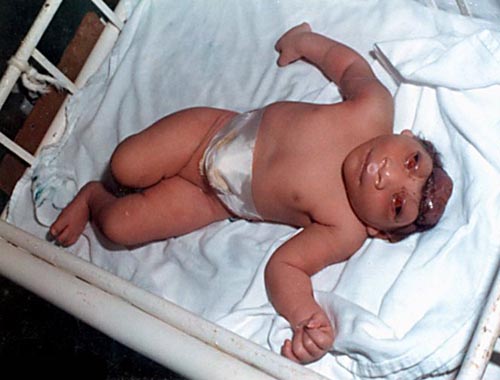Neural Tube Defects, Anencephaly
Neural tube defects (NTDs) are birth defects. They are a group of disorders that arise early in pregnancy that affect the development of a baby and can cause life-long complications of varying severity. During the first 3 to 4 weeks of a pregnancy, specific cells in a developing baby curl up and their edges fuse together to form a narrow tube that becomes the foundation of the spinal cord, brain, and the bone and tissues that surround them. This neural tube fusing process usually is complete by 28 days of pregnancy (gestation), before many women even know that they are pregnant. A neural tube defect occurs when the tube does not close properly somewhere along its entire length. Normally, the spinal cord and brain are surrounded and cushioned by cerebrospinal fluid (CSF) and are protected by outer layers of tissue called the meninges. The brain is further protected by the skull, and the spinal cord is protected by the bones of the spine (vertebrae), which form a flexible protective armor of bone. When someone has a NTD, there are one or more gaps in the brain or spinal cord's protection. This can affect the brain's development and can leave the spinal cord vulnerable to damage. Because the spinal cord contains the nerves that control body movement, any damage that occurs can paralyze or weaken associated muscles and organs. The type of NTD that develops, its severity, its affect on fetal development, and its potential for future complications will depend upon where the opening is and what tissues are involved.
